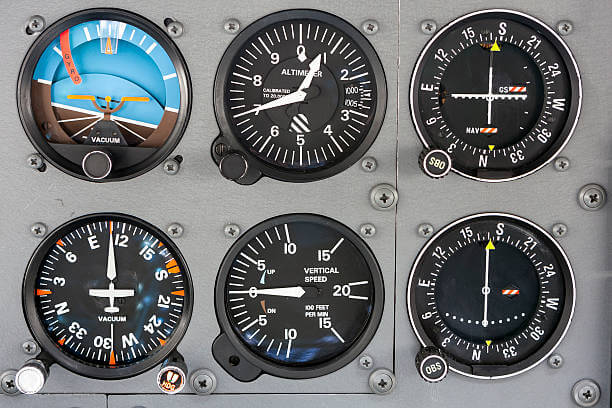In the dynamic world of aviation, mastering Instrument Flight Rules (IFR) is essential for pilots aiming to navigate safely and confidently through adverse weather conditions. Unlike Visual Flight Rules (VFR), which rely on visual references, IFR enables pilots to rely on instrumentation, navigation aids, and air traffic control for guidance. Understanding IFR procedures empowers pilots to expand their flying capabilities, access a wider range of airports, and enhance their overall proficiency in the cockpit. In this comprehensive guide, we’ll explore the fundamental principles, procedures, and benefits of flying under Instrument Flight Rules, providing pilots with the knowledge and skills they need to navigate the skies with precision and confidence.
Demystifying Instrument Flight Rules (IFR): A Comprehensive Guide for Pilots
JOIN TODAY! | MEMBER LOGIN
Navigating through the skies demands a keen understanding of the various rules and procedures that govern flight operations. For pilots seeking to fly safely and confidently in all weather conditions, mastering Instrument Flight Rules (IFR) is essential. In this comprehensive guide, we’ll delve into the intricacies of IFR, exploring its fundamental principles, procedures, and benefits for pilots. Whether you’re a seasoned aviator or a student pilot embarking on your journey, understanding IFR is key to unlocking new horizons and expanding your capabilities in the cockpit.
Understanding Instrument Flight Rules (IFR):
- Definition and Purpose – Instrument Flight Rules (IFR) refer to a set of regulations and procedures that govern flight operations when flying in conditions where visual reference to the ground or horizon is not available. The primary purpose of IFR is to ensure safe and efficient navigation through adverse weather conditions, including low visibility, clouds, and precipitation.
- Differentiation from Visual Flight Rules (VFR) – Unlike Visual Flight Rules (VFR), which rely on visual cues and landmarks for navigation, IFR relies on instrumentation, radio navigation aids, and air traffic control for guidance and communication.
Key Components of IFR:
- Instrumentation and Avionics – IFR flights require aircraft equipped with specialized instrumentation and avionics, including attitude indicators, altimeters, airspeed indicators, navigation radios, and GPS systems. These instruments provide essential information to pilots for maintaining aircraft control and navigation in instrument meteorological conditions (IMC).
- Navigation Aids – Pilots rely on a variety of navigation aids, including VOR (VHF Omnidirectional Range), DME (Distance Measuring Equipment), NDB (Non-Directional Beacon), and GPS (Global Positioning System), to navigate along designated airways and instrument approaches.
- ATC Communication – Effective communication with air traffic control (ATC) is paramount for IFR flights. Pilots must adhere to ATC instructions, clearances, and procedures to ensure safe separation from other aircraft and navigate through controlled airspace.
Instrument Flight Rules (IFR) Procedures and Flight Planning:
- Filing an IFR Flight Plan – Prior to departure, pilots must file an IFR flight plan with the appropriate ATC facility. The flight plan includes essential information such as aircraft identification, departure and destination airports, route of flight, expected departure time, and altitude.
- Pre-Flight Briefing and Weather Analysis – Pilots conduct a thorough pre-flight briefing and weather analysis to assess current and forecasted weather conditions along the planned route of flight. This includes reviewing weather reports, forecasts, and NOTAMs (Notices to Airmen) to identify potential hazards or areas of concern.
- Clearance and Departure Procedures – Upon receiving an IFR clearance from ATC, pilots follow specific departure procedures, including taxi instructions, departure headings, and altitude assignments. Pilots must adhere to ATC instructions and clearances throughout the departure phase of flight.
Instrument Flight Rules (IFR) In-Flight Procedures and Navigation:
- Navigating Along Airways – During cruise flight, pilots navigate along designated airways, following radio navigation aids and GPS waypoints to maintain course and track progress. The use of autopilot systems can assist pilots in maintaining precise navigation and altitude control.
- Instrument Approaches – As the aircraft approaches its destination airport, pilots execute instrument approaches, which provide lateral and vertical guidance to the runway in low visibility conditions. Common types of instrument approaches include ILS (Instrument Landing System), RNAV (Area Navigation), and VOR/DME approaches.
Benefits of Flying under Instrument Flight Rules:
- Increased Safety and Reliability – IFR enables pilots to fly safely and confidently in adverse weather conditions, reducing the risk of spatial disorientation and controlled flight into terrain (CFIT).
- Access to More Airports – Flying under IFR allows pilots to access a wider range of airports and destinations, including those with limited or no visual approaches available.
- Enhanced Training and Skill Development – Mastering IFR procedures and techniques enhances a pilot’s overall proficiency and situational awareness, preparing them for a wider range of flying scenarios and conditions.
Instrument Flight Rules (IFR) Challenges and Considerations:
- Complexity and Workload – Flying under IFR requires careful planning, coordination, and execution, often resulting in increased cockpit workload, especially during critical phases of flight.
- Training and Currency Requirements – Pilots must undergo specialized training and maintain currency requirements to fly under IFR, including regular instrument proficiency checks and recency of experience requirements.
Instrument Flight Rules (IFR) represent a cornerstone of aviation safety and proficiency, enabling pilots to navigate through adverse weather conditions with confidence and precision. By understanding the fundamental principles, procedures, and benefits of IFR, pilots can expand their capabilities and unlock new opportunities for safe and efficient flight operations. Whether flying for personal or professional purposes, mastering IFR is essential for pilots seeking to navigate the skies with skill, confidence, and professionalism.
As an E3 Aviation member, you get access to TONS of informative aviation articles and content. Sign Up or Log In today and enjoy all of the tools, resources, product discounts, community and entertainment that E3 Aviation Association offers.

